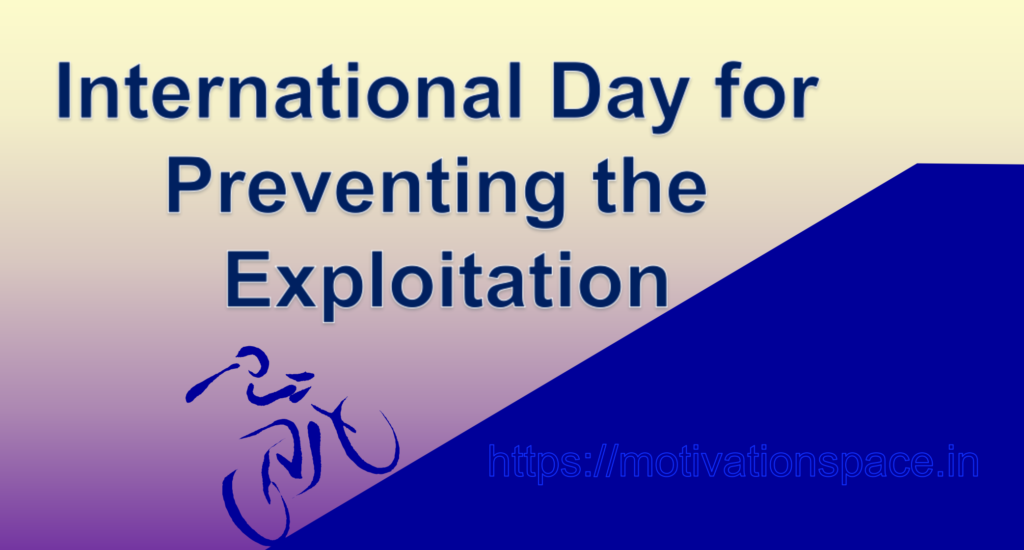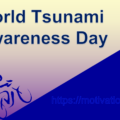Contents of this article
International Day for Preventing the Exploitation of the Environment in War and Armed Conflict. Protecting Our Planet in Times of Strife. War and armed conflict are often discussed in terms of their immediate and visible impacts: loss of life, destruction of infrastructure, and displacement of communities. However, the environmental consequences of these conflicts are equally profound, though sometimes less visible. The International Day for Preventing the Exploitation of the Environment in War and Armed Conflict, observed on November 6th, serves as a reminder of these often-overlooked issues. In this blog, we’ll explore the significance of this day, the environmental consequences of war, and the importance of preventing the exploitation of the environment in times of conflict.
The Origin and Significance of the Day
The United Nations designated November 6th as the International Day for Preventing the Exploitation of the Environment in War and Armed Conflict to raise global awareness about the environmental devastation caused by armed conflicts and the importance of preserving the environment during and after conflict. This observance is a recognition of the profound and lasting ecological impacts that war can have on our planet.
Environmental Consequences of War and Armed Conflict
War and armed conflict can inflict severe and long-lasting damage to the environment. Some of the primary environmental consequences include:
1. Destruction of Ecosystems:
Armed conflict often results in the deliberate or collateral damage to ecosystems. Forests, wetlands, and critical habitats may be destroyed, impacting biodiversity and the services that these ecosystems provide.
2. Contamination of Natural Resources:
War can lead to the contamination of vital natural resources, such as water sources, soil, and air. The release of hazardous materials, the use of chemical weapons, and the destruction of industrial facilities can result in pollution that persists long after the conflict has ended.
3. Displacement of Wildlife:
As conflicts displace human populations, wildlife is also affected. The presence of armed forces, displaced communities, and military activities can disrupt ecosystems and force wildlife from their natural habitats.
4. Unexploded Ordnance:
Unexploded ordnance poses a significant threat to the environment and human safety. These remnants of war can contaminate soils and water sources, making them unsafe for both wildlife and local populations.
5. Deforestation and Land Degradation:
The demand for resources during conflict, such as timber for construction and fuel, can lead to deforestation and land degradation. These activities can have long-term consequences for soil quality and ecosystem health.
6. Impact on Agriculture:
Agriculture is often disrupted during conflicts, making it challenging for communities to access food and resources. Landmines and other explosives can render agricultural land unusable.
7. Climate Change Implications:
The environmental damage caused by war can contribute to climate change. The release of greenhouse gases from the destruction of infrastructure and the burning of fuel can exacerbate global warming.
8. Water Scarcity:
Access to clean water is a critical issue during armed conflicts. Contaminated water sources, damaged infrastructure, and restrictions on water access can lead to severe water scarcity.
The Importance of Prevention and Mitigation
Preventing the exploitation of the environment during armed conflict is crucial for several reasons:
1. Protecting Biodiversity:
Ecosystems provide habitats for a wide range of plant and animal species. The destruction of these habitats during conflict can lead to a loss of biodiversity and disruptions in ecosystems.
2. Sustaining Livelihoods:
Many communities rely on their local environments for their livelihoods, including agriculture, fishing, and forestry. Protecting the environment during conflict is essential to ensuring these communities can recover and rebuild after the conflict has ended.
3. Human Health and Well-being:
Environmental degradation and pollution resulting from conflict can have dire consequences for human health. Contaminated water sources, polluted air, and hazardous materials pose health risks to both combatants and civilians.
4. Post-Conflict Recovery:
Protecting the environment during conflict simplifies post-conflict recovery efforts. Preserving critical infrastructure, natural resources, and ecosystems makes it easier for communities to rebuild and reestablish their lives.
5. International Law and Accountability:
International humanitarian law, including the Geneva Conventions, contains provisions that prohibit the unnecessary destruction of the environment during armed conflicts. Holding parties to conflicts accountable for environmental damage is essential for maintaining global norms and principles.
Efforts to Prevent Environmental Exploitation
Preventing the exploitation of the environment during armed conflict involves a multi-faceted approach:
1. International Laws and Conventions:
International agreements, such as the Geneva Conventions and the Hague Conventions, contain provisions that prohibit the indiscriminate destruction of the environment during armed conflicts.
2. Accountability:
Holding parties responsible for environmental damage is crucial. The International Criminal Court (ICC) can prosecute individuals for war crimes, including those that cause significant harm to the environment.
3. Conflict Prevention and Diplomacy:
Preventing conflict in the first place is the most effective way to avoid environmental exploitation. Diplomatic efforts, peacekeeping missions, and conflict resolution play a critical role in preventing conflicts.
4. Sustainable Practices:
Encouraging the use of sustainable practices within armed forces can help mitigate the environmental impact of military activities. This includes reducing waste, responsibly managing hazardous materials, and minimizing resource consumption.
5. Post-Conflict Environmental Assessment and Remediation:
After a conflict, conducting environmental assessments and remediation efforts can help mitigate the damage caused during the conflict. This includes demining, cleaning up hazardous materials, and restoring ecosystems.
Global Initiatives and Progress
There have been notable global initiatives aimed at preventing the exploitation of the environment during armed conflict:
1. The Environment and Emergencies Forum (EEF): The EEF is an international platform that brings together governments, organizations, and experts to discuss and address environmental challenges during emergencies, including armed conflict.
2. The Environment, Conflict, and Cooperation (ECC) Initiative: The ECC Initiative seeks to examine the environmental dimensions of conflicts and to promote cooperation among countries to address these issues.
3. Promoting Legal Accountability: International organizations and governments are working to ensure that individuals and parties responsible for environmental damage during conflicts are held accountable.
4. Research and Data Collection: Researchers and organizations are collecting data and conducting studies to better understand the environmental impact of conflicts and to develop strategies for mitigation and recovery.
Conclusion for International Day for Preventing the Exploitation
The International Day for Preventing the Exploitation of the Environment in War and Armed Conflict underscores the importance of recognizing and addressing the environmental consequences of conflicts. As our world faces an increasing number of environmental challenges, preserving our planet’s natural resources and ecosystems during times of strife is not just a moral imperative but a practical necessity. By raising awareness, upholding international laws, promoting accountability, and advocating for sustainable practices, we can work towards a future where the environment is no longer an unwitting casualty of armed conflicts. Feel free to contact us for any query related to the contents of this website.


